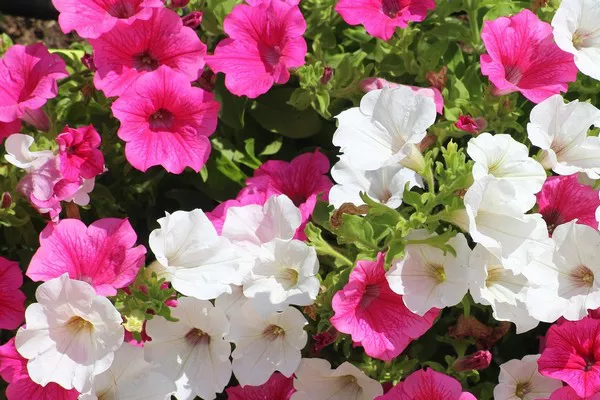Michigan, with its diverse landscapes and temperate climate, provides a haven for a variety of bird species, including the beloved hummingbird. These tiny, vibrant birds are not only a delight to observe but also play a crucial role in pollination. By cultivating a garden with flowers that attract hummingbirds, residents of Michigan can contribute to the conservation of these fascinating creatures while enhancing the beauty of their outdoor spaces.
Understanding Hummingbird Behavior
Before delving into the specific flowers that attract hummingbirds in Michigan, it’s essential to understand the behavior and preferences of these unique birds. Hummingbirds are attracted to brightly colored flowers, particularly those that are red, orange, or pink. These colors signal to the birds that the flowers are a potential source of nectar, their primary food source.
In addition to color, hummingbirds are drawn to flowers with tubular shapes, as their long, slender bills are well-suited for accessing the nectar deep within the blooms. Fragrance is less important to hummingbirds than it is to other pollinators such as bees and butterflies.
Hummingbirds are also highly territorial, defending feeding areas from other birds, including other hummingbirds. Therefore, planting a variety of flowers throughout your garden can help accommodate multiple hummingbirds without causing conflicts.
Top Flowers to Attract Hummingbirds in Michigan
1. Trumpet Vine (Campsis radicans):
Also known as trumpet creeper or hummingbird vine, this native North American plant produces vibrant orange-red trumpet-shaped flowers that hummingbirds find irresistible. Trumpet vine is a vigorous climber, making it ideal for trellises, fences, or arbors. It thrives in full sun and well-drained soil, making it well-suited to Michigan’s climate.
2. Bee Balm (Monarda spp.):
Bee balm, also called bergamot or Oswego tea, is a perennial herbaceous plant native to North America. It produces showy clusters of tubular flowers in shades of red, pink, or purple, which are highly attractive to hummingbirds. Bee balm prefers moist, well-drained soil and partial shade, although it can tolerate full sun with adequate moisture.
3. Cardinal Flower (Lobelia cardinalis):
Named for its brilliant red flowers reminiscent of the robes worn by Catholic cardinals, the cardinal flower is a favorite of hummingbirds. This native perennial thrives in moist, shady habitats such as woodland edges and stream banks. Planting cardinal flower along the edges of a garden or near water features can provide hummingbirds with a reliable food source.
4. Columbine (Aquilegia spp.):
Columbine is a genus of flowering plants native to North America, Europe, and Asia. It produces delicate, bell-shaped flowers in an array of colors, including red, pink, purple, and yellow. While all columbine varieties are attractive to hummingbirds, the red and pink-flowered species tend to be particularly appealing. Columbine prefers partial shade and well-drained soil.
5. Salvia (Salvia spp.):
Salvia, also known as sage, encompasses a diverse group of flowering plants ranging from annuals to perennials. Many salvia species produce tubular flowers in shades of red, pink, purple, or blue, which hummingbirds find irresistible. Planting a variety of salvias with overlapping bloom times can provide a continuous nectar source for hummingbirds throughout the growing season.
6. Red Hot Poker (Kniphofia uvaria):
Red hot poker, also known as torch lily or poker plant, is a striking perennial with tall spikes of tubular flowers in shades of red, orange, and yellow. The bright colors and nectar-rich blooms make it a favorite of hummingbirds and other pollinators. Red hot poker thrives in full sun and well-drained soil, making it well-suited to Michigan’s climate.
7. Scarlet Sage (Salvia coccinea):
Scarlet sage is a tender perennial native to the southeastern United States but is often grown as an annual in cooler climates like Michigan. It produces vibrant red tubular flowers that bloom profusely from summer to fall, providing a reliable food source for hummingbirds during their migration. Scarlet sage thrives in full sun to partial shade and well-drained soil.
8. Coral Bells (Heuchera spp.):
Coral bells are prized for their attractive foliage and delicate, bell-shaped flowers, which come in a variety of colors including red, pink, and white. While the flowers are small compared to other hummingbird favorites, they still provide a valuable nectar source, especially when planted in large drifts. Coral bells prefer partial shade and well-drained soil.
9. Hummingbird Mint (Agastache spp.):
Hummingbird mint, also known as hyssop or giant hyssop, is a genus of flowering plants native to North America. It produces spikes of tubular flowers in shades of red, pink, purple, or blue, which are highly attractive to hummingbirds and butterflies. Hummingbird mint thrives in full sun and well-drained soil, making it an excellent choice for Michigan gardens.
10. Honeysuckle (Lonicera spp.):
Honeysuckle vines produce clusters of tubular flowers in shades of red, orange, yellow, or pink, which emit a sweet fragrance that attracts hummingbirds. While some honeysuckle species are invasive, there are native varieties such as trumpet honeysuckle (Lonicera sempervirens) that are well-suited to Michigan’s climate. Planting honeysuckle near trellises or fences provides hummingbirds with perches from which to feed.
Creating a Hummingbird-Friendly Habitat
In addition to planting flowers that attract hummingbirds, there are several other ways to create a welcoming habitat for these tiny birds:
1. Provide fresh water: Hummingbirds need access to clean, shallow water for drinking and bathing. Consider installing a bird bath or small fountain in your garden.
2. Offer perches: Hummingbirds are territorial and often perch in high, open areas to survey their surroundings. Place perches such as small branches or decorative stakes throughout your garden to give them places to rest.
3. Avoid pesticides: Chemical pesticides can harm hummingbirds and other pollinators. Instead, opt for natural pest control methods such as hand-picking insects or using organic pesticides.
Conclusion
By incorporating these flowers and habitat enhancements into your garden, you can create a haven for hummingbirds in Michigan while enhancing the beauty and biodiversity of your outdoor space. With careful planning and maintenance, you can enjoy the sight of these delightful birds darting among the blooms for years to come.


